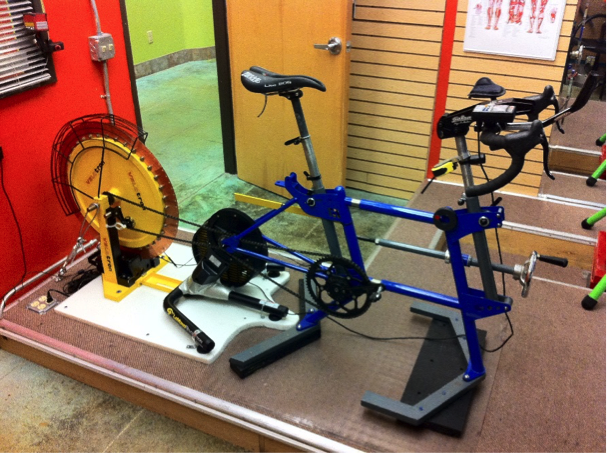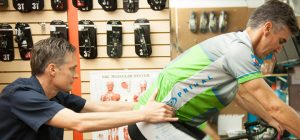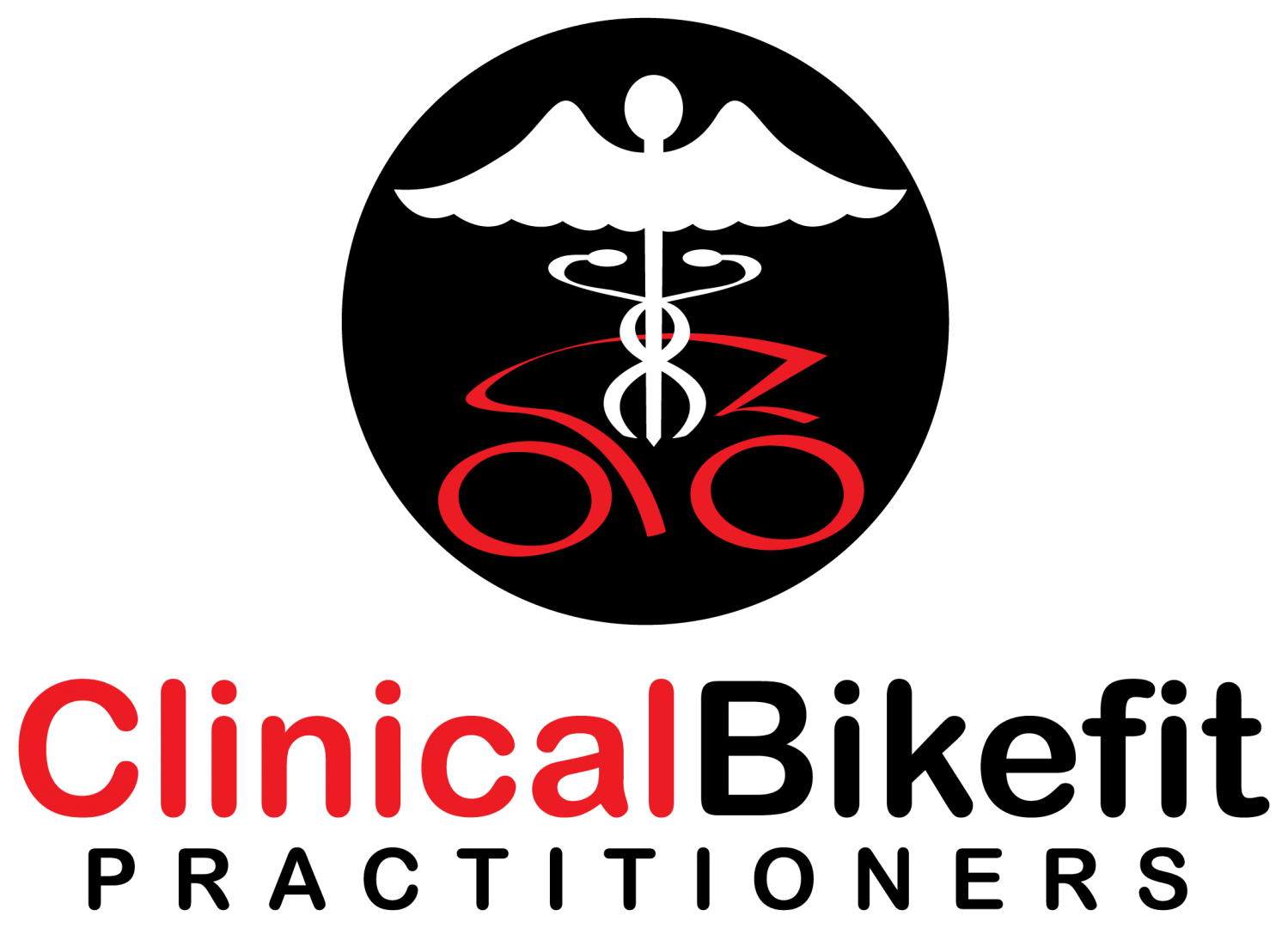
Trusting the Eyes and Ears by Jerry Gerlich

The bicycle/rider connection is an easy concept to understand but can be challenging to optimize. All of us breathe, stand, walk, run, jump, swim, twist, dance, stabilize, sleep, drive and cycle in unique ways. When you factor in aging, falls, over/de-training and overuse injuries, the position variables can skyrocket. Since each of us stamps a unique “functional-stability signature” onto our cycling style, would it be reasonable to expect that two riders, with the same body metrics would need different positions? My answer is resounding yes.
The late owner of Castle Hill Fitness/Castle Hill Cycles, Paolo Minissi, surprised me with a Racermate Velotron in 2004 for performance testing and to test watts/pedaling efficiency during bike fittings. Collecting performance data before and after bike fittings seemed like a no brainer. What could be better than quantifying performance improvements than by an accurate, reliable and respected cycling ergometer?
I was elated about the technology and spent over 9 years experimenting with this great piece of equipment and observing data. We modified the Velotron in 2012 with a LeMond Revolution trainer allowing clients to obtain the Gold Standard Velotron cycling data on his/her own machine. Below is a pic of the Mikkelsen/Velotrolution which can be quickly reset with a real bicycle.

After many years, several hundred emails, two trips to Sydney and making it through Steve’s rigorous bike fitting training, I decided to refine my fitting approach away from the data-driven Velotron toward a more client-specific approach with more emphasis on stability, form and function and comparing what I hear with what I see. Why not put decades of listening skills to use in the bike fitting lab?
Why would I move away from the gold standard Velotron?
-
New cleat/seat/bar positions can cause performance power and efficiency to dip for days or even weeks following a fitting… hard to explain when you only have an afternoon with an out of town client
-
The final fitting product after an outside ride is often different than what works on a stationary, firmly supported ergometer
-
30-45 precious minutes of testing and analysis of the data can be better spent exploring function, breathing and stabilizing activities
-
Some of the data-driven clients lose focus of the #1 goal, finding a more stable/comfortable position by obsessing over the data screen
-
Some clients want a new position to specifically correlate in a manner that connects the test data with “traditional” fitting norms like joint angles and anatomical landmarks between the computer data, such as gaining more watts, without considering the bigger picture of stability and form
-
The Velotron and other ergometers are heavy and unnaturally stable, unlike real bicycles
After years of assessing and fitting, I learned that by listening to and watching riders, I can make better sense of what the eyes, ears and “gut feeling” tell me. Thus, the technology that once seemed indispensable became a fitting distraction. I watch the body/bike and listen to the drivetrain. An effective cue is to watch the rear derailleur pulley/listen to the chain as each foot passes through the bottom of the stroke. A constant whirring sound indicates a smooth transition whereas a choppier/fragmented sound indicates one or both legs are losing control of the stroke. The fragmented noises indicate a need to move the seat, shim a cleat or maybe even adjust a handlebar.
Solid drummers spend years honing tempo skills by practicing with a metronome, a timing device that produces sounds at desired tempos to develop solid rhythm. Like stored data from a Velotron, music recorded with a metronome provides a method to determine if a drummer’s rhythm is “dragging, rushing, or appropriate” for the desired musical piece. However, after years of “click track” training, some pro musicians start sounding mechanical and boring. Once a seasoned musician learns to express sounds as a groove without a metronome, noise becomes music. Learn to trust the eyes and ears and your assessment skills will improve
Onward through the fittings,
Jerry Gerlich
Castle Hill Fitness
Subscribe
Please login to comment
0 Comments
